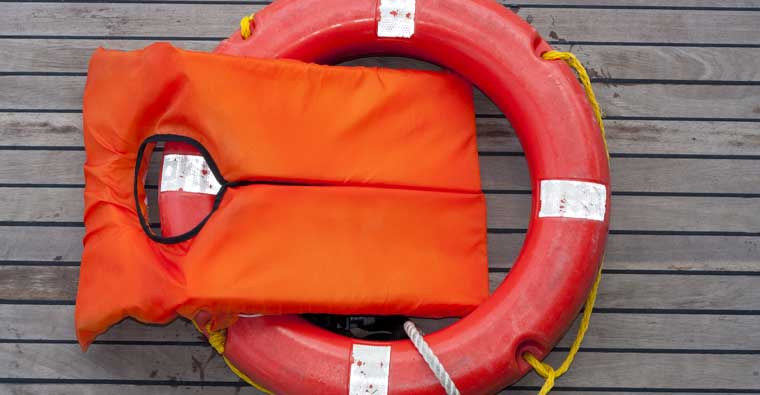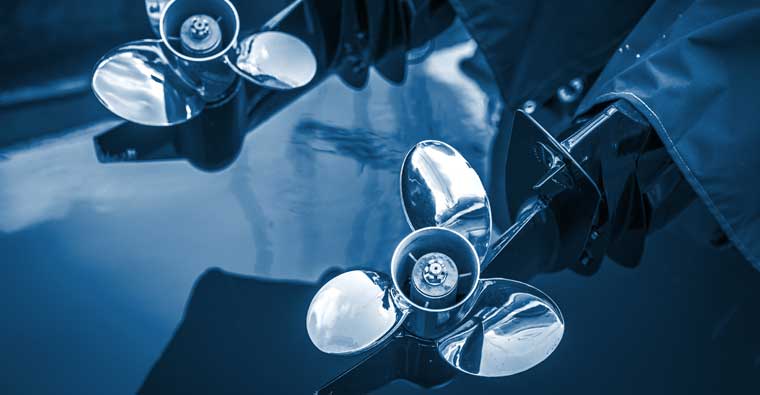As you probably know, boat ownership and maintenance is expensive! Having a good boat maintenance schedule can help with maintaining your yacht in good shape for all the trips you make, reducing the likelihood of costly repairs, picking up any problems early before they become major issues.
This boat maintenance checklist will help you keep on top of all the jobs you need to complete as regular maintenance will help keep your boat working well and retain its value, but also to keep you (and everyone else) safe on the water.
We have broken our yacht maintenance checklist down into three main sections; daily checks, monthly checks and annual checks to make it easy to navigate and so you know exactly what needs doing and when to get the most from your boat.
Daily checks
Regular boat maintenance is really important for keeping your vessel seaworthy and for safety, these checks should be carried out before every departure in your boat.
Health and safety
- Ensure lifejackets and flares are on board
- Ensure the first aid kit is fully stocked
Sails and rigging
- Visual checks should be carried out before each journey and monitored throughout the journey for any issues such as mould or damage
Engine, mechanics & Electrical systems
- Check the level in the fuel tank and top up if required
- Do a simple visual inspection the engine and engine room and make note of engine performance
- Check levels of engine oil, transmission fluid, antifreeze and coolant levels
- Inspect the pulleys and engine belts, paying particular attention to belt tension
- Ensure alternator and water pump belts are tight
- Check battery charge level
- Check your marine navigation system and GPS is working
Monthly checks
These boat maintenance checks should be carried out on a regular basis but don’t have to be done each time you make a journey. Instead, we suggest doing them every month or so.
Health and safety
- Check the deck rails to ensure they are fastened well
- Check any fire alarms on board
- Inspect lifejackets (and/or other life preservation equipment) and ensure they are in good working condition
Sails and rigging
- Check for any worn lines and replace
- Check for wear and tear on the mainsail, other sails and particularly where the headsail sheets attach
- Check the position and condition of cotter pins and shroud
- Ensure good condition of the pelican hooks and turnbuckles on the lifeline
Engine, Mechanics & Electrical systems
- Monthly engine maintenance means a oil and oil filter change
- Check and clean raw water strainer and air filters
- Check pumps and condenser coil for any build up
- Check impeller on bilge pumps and check for leaks, grease with water pump grease only then lubricate pump with silicone spray
- You may also need to check float switches on automatic bilge pumps
- Clean the thru hull and inspect for damage
- Clean and flush the syphon break
- Check the heat exchanger anodes, replace if necessary
- Check battery wire connections and cables and for any leaks around battery terminals
- Inspect lighting and its wiring
- Check fuses and breakers
Hull and deck
- Check deck railings are secure
- Check the fixings on any swimming ladders
Tender
- Check paddles and outboard motor on tender
- Check tender for damage and make any repairs as necessary
Annual Checks
These yearly checks are best done at the start of the season or over the winter months as part of an annual service to make sure your yacht is in perfect working order for the season ahead.
We have broken the checks down into key areas to help make the task more manageable. We suggest you check this list at the end of the season so you have plenty of time to schedule any boat maintenance work over the winter months.
Health and safety
- Ensure fire extinguishers have been professionally checked and are in the correct location
- Safety check the stove or other on-board electrical equipment for faults
- Ensure the first aid equipment has not passed it’s expiry date
Sails and rigging
- Remove and wash the sails with a proper canvas cleaning product or have them professionally cleaned to help best preserve the material
Engine, mechanics & Electrical systems
- Drain the fuel tanks and check for any damage or contamination
- Check and change over the primary and secondary fuel filters, replace if necessary
- Check the propeller
- Check fuel lines for leaks or damage
- Thoroughly check all wires connections and bolts and replace any which show signs of wear or damage
- Lubricate any fittings
- Check air conditioning
- Carry out an oil change, replacing the oil filter
Hull and Deck
- Give your hull a deep clean using a soft brush and fresh water and look for any stress cracks or leaks that need to be remedied, apply wax or hull paints
- Check the fitting of your ultrasonic antifouling transmitters
- If using traditional antifouling, sand down and reapply the antifouling paint
- Check the rudder, keel and hull for damage, this should be done immediately after any form of collision as well as annually, be sure to fix as soon as possible
- Treat any scratches or rusting with a gelcoat restorer or rust inhibitor as appropriate
- Check waterproofing on covers, reapply waterproofing solution if required
- Clean and, if no longer working optimally, put a new anti-slip finish on your deck
Listed above are some of the more common jobs, however, all boats are different and yours may require slight modifications to this checklist when it comes to boat maintenance. Carrying out these visual checks and tasks regularly will maintain optimal condition of your boat both for performance and in terms of safety.
We hope you found this boat maintenance checklist useful. If you would like any more information on using ultrasonic antifouling systems on your boat then do check out our ultrasonic fouling control brochure or contact us for more advice.




